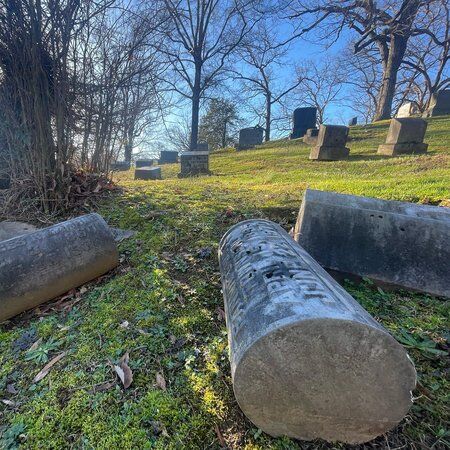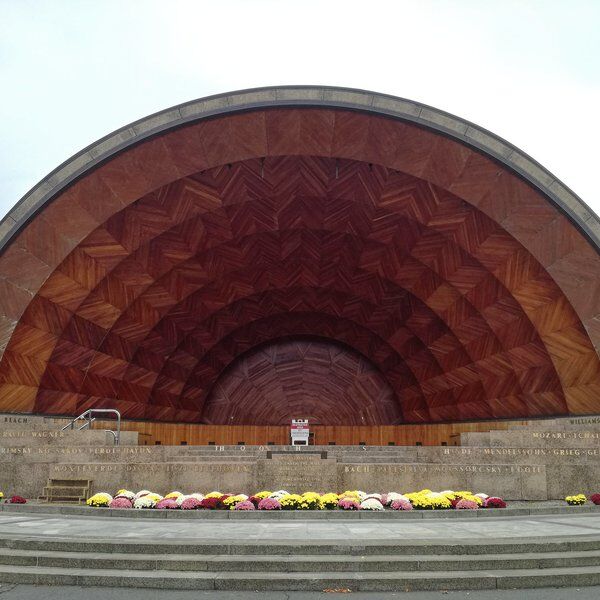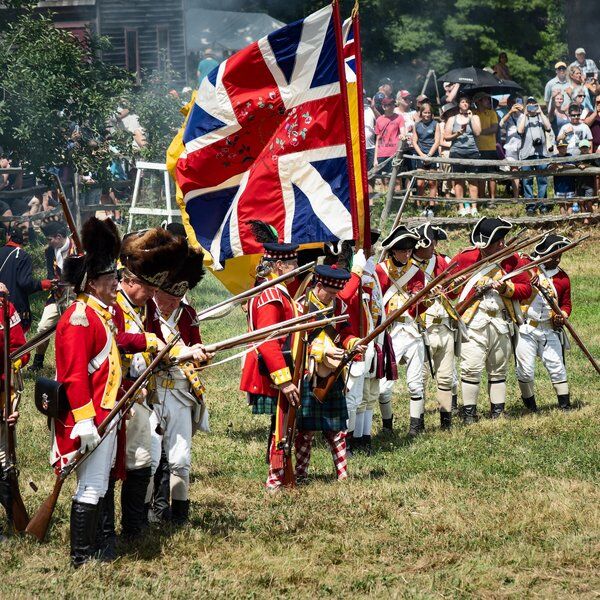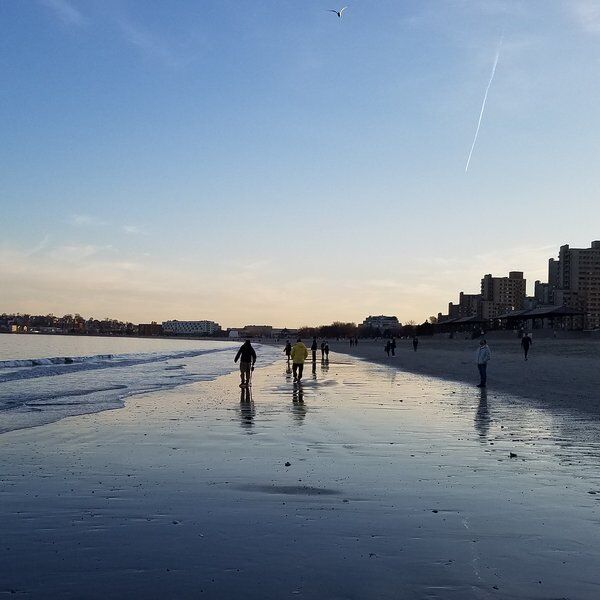Forest Hills Cemetery: A Jewel in Boston’s Emerald Necklace
“Take your troubles, anything that’s bothering you, and leave them out here.”
Spread over 275 acres in Boston's Jamaica Plain neighbourhood, Forest Hills Cemetery encompasses more ground than most people could cover in several days.
Centred around Lake Hibiscus, it is an ever-flowing landscape of gardens, sculptures, pathways, and (of course!) hills and trees paying homage to generations of notable Bostonians. But this picturesque cemetery has become much more than a final resting place.
Featured on the National Register of Historic Places from 2004, it is a cultural landmark, an arboretum, and a place for wandering in quiet contemplation. By its very nature, each visit through that Gothic Revival gateway will unveil some new aspect of the graveyard's 19th-century art and architecture to its visitors.
Established in 1848 as a park-like burial setting, Forest Hills is now one of North America’s finest examples of a Victorian garden cemetery and is part of Greater Boston’s ‘Emerald Necklace’. This refers to a series of linking parks and green spaces (the jewels), that form a ring, or ‘necklace’ around the city.
Join us as we explore the allure and significance of Forest Hills Cemetery, a sanctuary filled with natural and man-made beauty that honours both the past and the present.

Creating a ‘Rural’ Cemetery
“[The cemetery’s] winding avenues and shaded paths, observ[e] how each should reveal some beauty while making available the gentle slopes or rugged steeps as resting places for the dead.”
Taking inspiration from Forest Hills, the ‘Emerald Necklace’ park system was formulated by Frederick Law Olmstead – an entire generation after Henry A. S. Dearborn had the vision to create a ‘rural’ cemetery within a public park. A place where visitors could take so much more from their visit, than simply paying respects to their loved ones.
The result was Forest Hills Cemetery, set upon a plot of farmland with ponds, and a variation of cluttered woodland and open fields – the perfect setting for a rural cemetery.
Prior to this, graveyards were not places to linger, with many tombstones bearing ominous carvings warning the living not to end up like the dead. And imploring them to repent of their sins.
However, as more romantic notions swept through burials, commemoration, and death, cemeteries began to resemble the landscapes of serene English country estates.
Language concerning ‘death’ shifted from fearful and dull associations to having achieved fulfilment and ‘eternal peace’.
As such, cemeteries would become places where people could go to be near loved ones that they would later join, in this ‘eternal rest’.
This was Dearborn’s desire for Forest Hills – a place to rest, peacefully, forever – with its grand Victorian artworks and pleasant scenery.

How the Romantic Shift Impacted Forest Hills
Although some of the headstones are originals from 1848, many were more light-hearted (and even interactive) than those in other cemeteries – giant xylophones to tap away on, or featuring small stone animals perched on top.
Every aspect of Forest Hills Cemetery was tailored to inviting people in and encouraging them to feel safe and at peace while mourning their loved ones.
Today, Forest Hills continues to offer visitors a safe space to exercise introspection and contemplation.
The tranquil pond, meandering paths, and secluded corners provide a peaceful atmosphere for visitors to find solace and connect with the natural world.
Whether seeking comfort in the presence of a loved one or simply wishing to embrace the serenity of the surroundings, Forest Hills Cemetery offers a space for personal reflection and renewal.
A Living Arboretum Within Forest Hills Cemetery
Dearborn was a botanist and the mayor of Roxbury, which was separate from Boston at the time. (Acting as a municipal cemetery for seven years, Forest Hills became a private non-profit institution when Boston annexed Roxbury, in 1868.)
He was also the first president of the Massachusetts Horticultural Society, a man whose passion for nature spilled over into his creation of the Forest Hills Cemetery.
Dearborn’s love of plants and nature is evident by the instalment of the plant nursery, a colorful display, allowing for the cultivation of both native and exotic flora. The grounds are also adorned with numerous trees including cherry trees, Japanese umbrella pines and maples, and weeping hemlocks.
There’s no telling if this was Dearborn’s vision or a happy coincidence but today, due to its diverse collection of trees, Forest Hills Cemetery has become a thriving Arboretum. A leisurely stroll through the cemetery is an invitation to appreciate the harmony between nature and artistry.

Historical Significance: Who is buried at Forest Hills Cemetery?
“It’s not just an arboretum cemetery… but a place that I think connects people of all walks of life.”
It is highly probable that Dearborn never envisioned that Forest Hills Cemetery would become one of the Greatest Places in all of Massachusetts. Despite its humble beginnings though, it has been listed in the Top 1000 places in the state, and is the everlasting resting place of some of Boston’s most esteemed citizens. People honored for their service to their country, in politics, literature, and the sciences.
A wander through the grounds will unveil the epitaphs of luminaries such as poet E.E. Cummings, abolitionist William Lloyd Garrison, playwright Eugene O’Neill, and the suffragist Lucy Stone – serving Boston’s rich heritage up on a plate of manicured gardens and sun-soaked trees.
Even in contemporary society, the cemetery welcomed people regardless of their religion, ethnicity or social class – plots were allocated for those who could and could not, afford to pay.
Similarly, Forest Hills Cemetery was the first to allow blacks and whites to be buried next to each other. Citizens have been interred at Forest hills just by the very motion of being treasured by their loved ones and society, irrelevant of origin or accomplishment.
Therefore, many people from all walks of life are laid in their ‘eternal peace’ at Forest Hills Cemetery.
“In many ways, it reflects the demographics of the metropolitan Boston area.”
Artistic Expression and Memorialization
Sculptures and Other Art
Beyond its horticultural significance, Forest Hills has an exquisite collection of outdoor sculptures and architectural delights. From elegant mausoleums and ornate memorials dotted along the hillside to contemporary sculptures and installations, art is interwoven into every aspect of the cemetery.
The stunning ‘Death Stays the Hand of the Sculptor’ monument, created in 1892 by sculptor Daniel Chester French, is an ode to his two Irish-born friends, Joseph and Martin Milmore, brothers who were buried at Forest Hills. Chester’s memorialization stands as a poignant symbol of grief and artistic mastery.
But there are other instalments which add a touch of playfulness to the cemetery as well – as strange as that sounds! Keep an eye out for the dressed-up family of trees and the miniature village. These artistic creations enrich the cemetery's landscape, elevating it to a gallery of profound expression.

The Miniature Village
One of the cemetery’s most popular attractions is the Miniature Village, which was installed in 2006. But why is there a Miniature Village in the cemetery?
Artist Christopher Frost created the tiny homes as a tribute to the people who are buried within Forest Hills – each one is unique and has been carefully modelled off the deceased's former residence. Due to the variation of wealth, class, and ethnicity, no one house is the same, showcasing a mixture of architectural styles.
For the Community
The site, which is still an active burial ground, also serves as a community hub hosting art exhibitions, concerts, tours, poetry readings, a popular lantern festival, and lectures. Each of these, amongst other events, are all sponsored by the Forest Hills Educational Trust, created in 1991.
Our Thoughts…
Forest Hills Cemetery is a testament to the intertwining of life and death, celebrating art and beauty, whilst immortalising history and people in a safe, spiritual sanctuary. Visitors are invited to embrace the beauty of life and reflect upon the legacy of those who came before. Whether you come to pay homage to a historical figure, seek comfort in nature, or immerse yourself in the artistic treasures that adorn the grounds, Forest Hills Cemetery offers itself up as a humble solace of tranquillity, contemplation, and reverence for the human spirit.
Interested in finding more places like this? Try one of our Boston Scavenger Hunts- untangle cryptic clues as a team, as you are taken on a journey to the most unique, unusual and bizarre corners of Boston and beyond!














